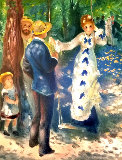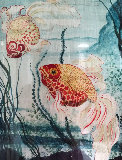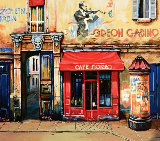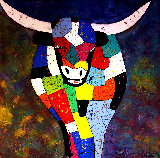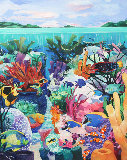





Les Ailes Sont Lourdes. Le Tout Est Primitif 1918
Paul Gauguin
Limited Edition Print : Engraving Printed on Wove Paper
Size : 8x6 in | 20x15 cm
Framed : 22x21 in | 56x53 cm
Edition : From the Edition of 100
Reduced
- 🔥1918 Framed Engraving on Wove Paper - Inquire - a Steal $1,600
Year1918
Plate SignedLower Right
Condition Excellent
Framed with PlexiglassWood Frame, Suede Matting
Purchased fromPrivate Collector 2015
Story / Additional InfoThis is one of the images in the memoirs created by Gauguin as his last works. original drawing by Gauguin in 1902-03 while in Hiva Oa , Marquesas Islands. This is one of the first state engravings printed in 1918 by Kurt Wolff Verlag in Leipzig.
Certificate of AuthenticityArt Brokerage
LID158202
Paul Gauguin - France
Art Brokerage: Paul Gauguin French Artist: Paul Gauguin was a financially successful stockbroker and self-taught amateur artist when he began collecting works by the impressionists in the 1870s. Inspired by their example, he took up the study of painting under Camille Pissarro. Pissarro and Edgar Degas arranged for him to show his early painting efforts in the fourth impressionist exhibition in 1879 (as well as the annual impressionist exhibitions held through 1882). In 1882, after a stock market crash and recession rendered him unemployed and broke, Gauguin decided to abandon the business world to pursue life as an artist full-time. In 1886, Gauguin went to Pont-Aven in Brittany, a rugged land of fervently religious people far from the urban sophistication of Paris. There he forged a new style. He was at the center of a group of avant-garde artists who dedicated themselves to synthétisme, ordering and simplifying sensory data to its fundamentals. Gauguin's greatest innovation was his use of color, which he employed not for its ability to mimic nature but for its emotive qualities. Over the next several years he traveled often between Paris and Brittany, spending time also in Panama and Martinique. In 1891 his rejection of European urban values led him to Tahiti, where he expected to find an unspoiled culture, exotic and sensual. Instead, he was confronted with a world already transformed by western missionaries and colonial rule. In large measure, Gauguin had to invent the world he sought, not only in paintings but with woodcarvings, graphics, and written works. Listings wanted.


















